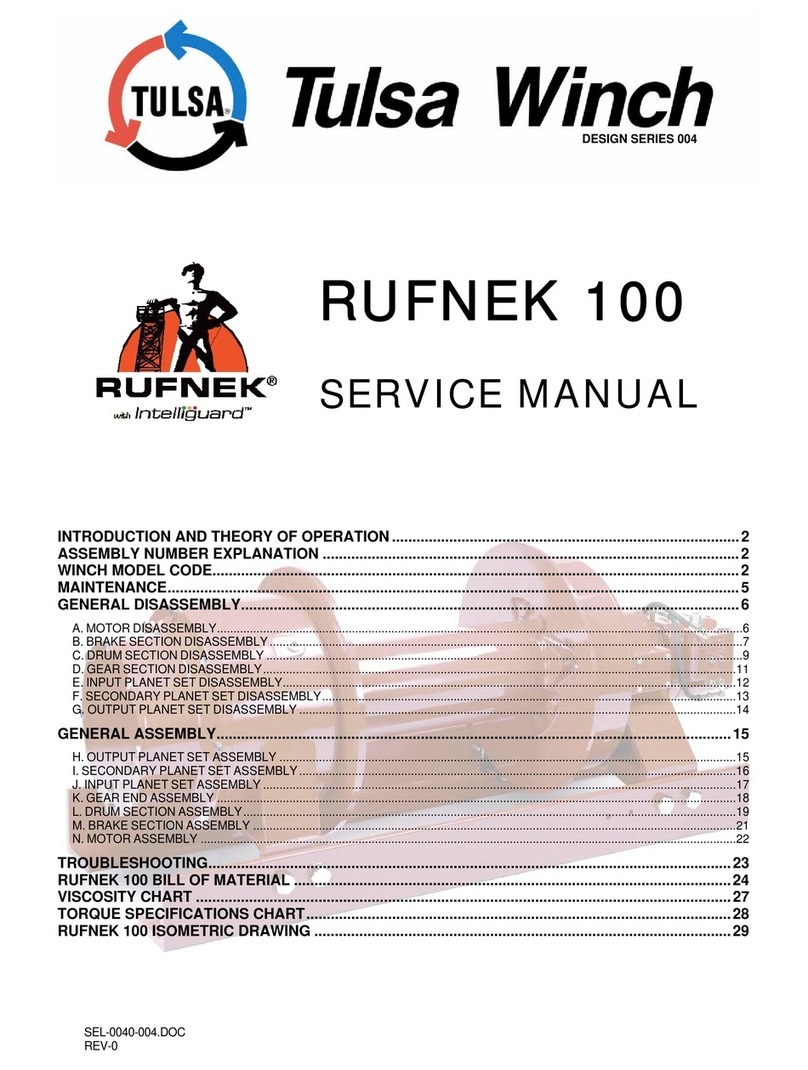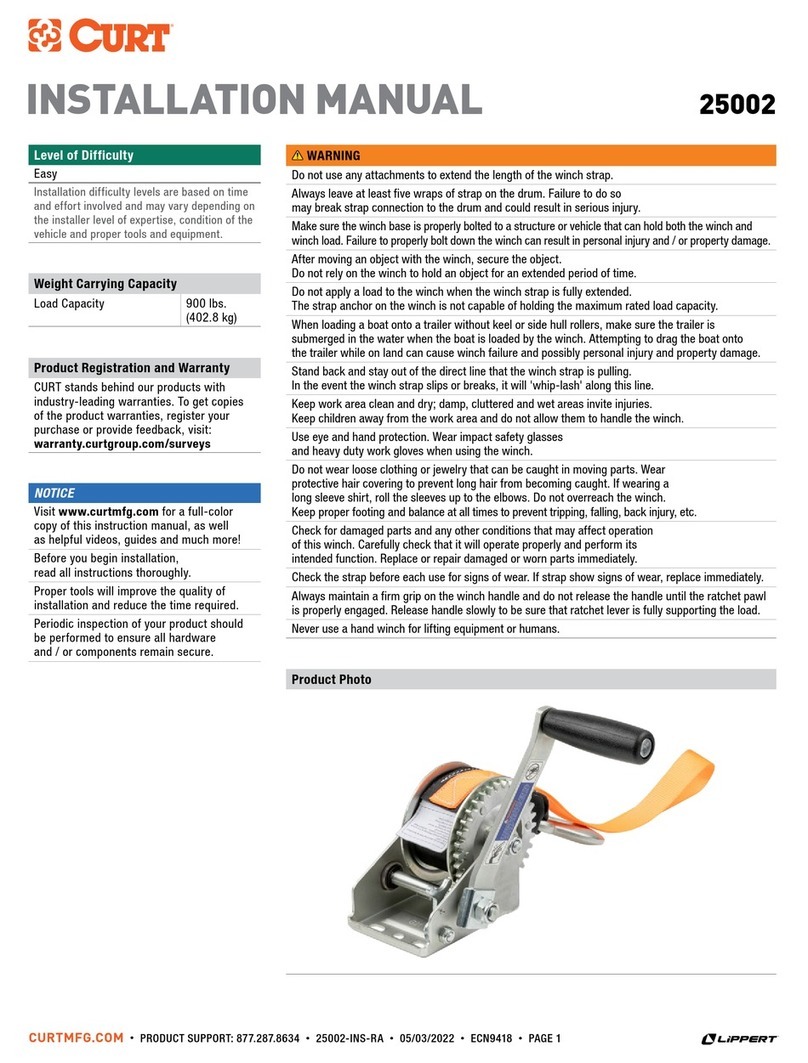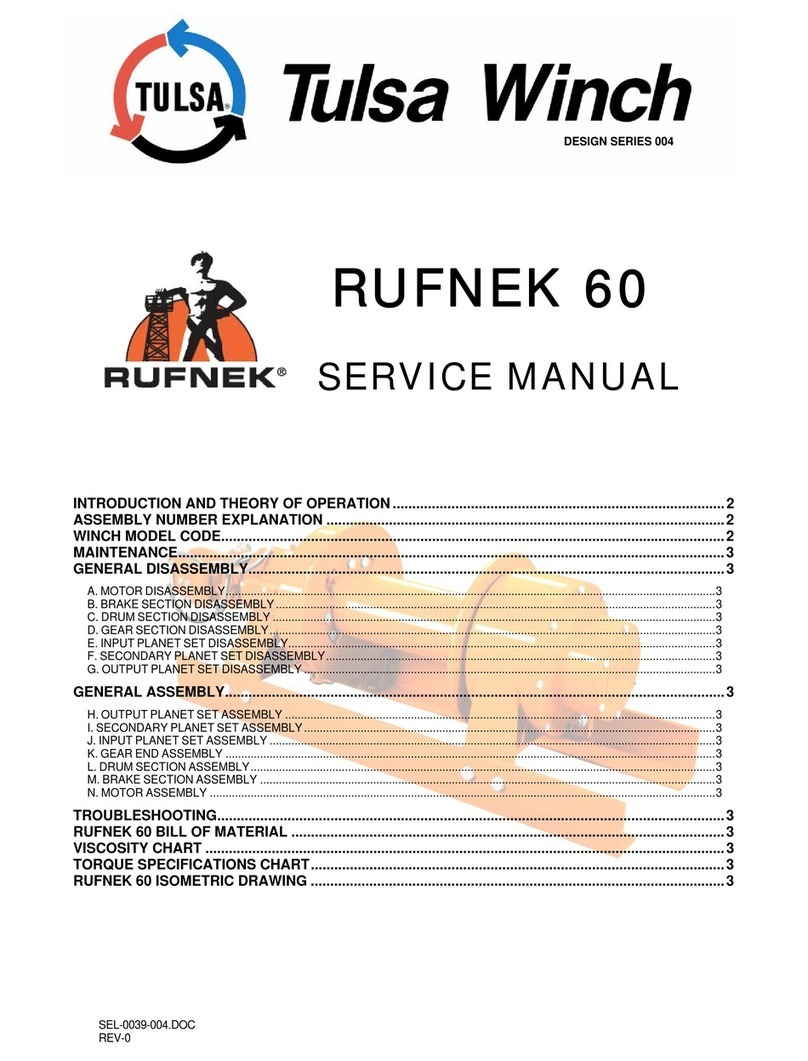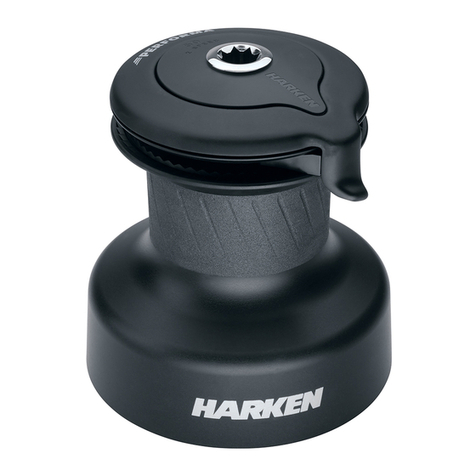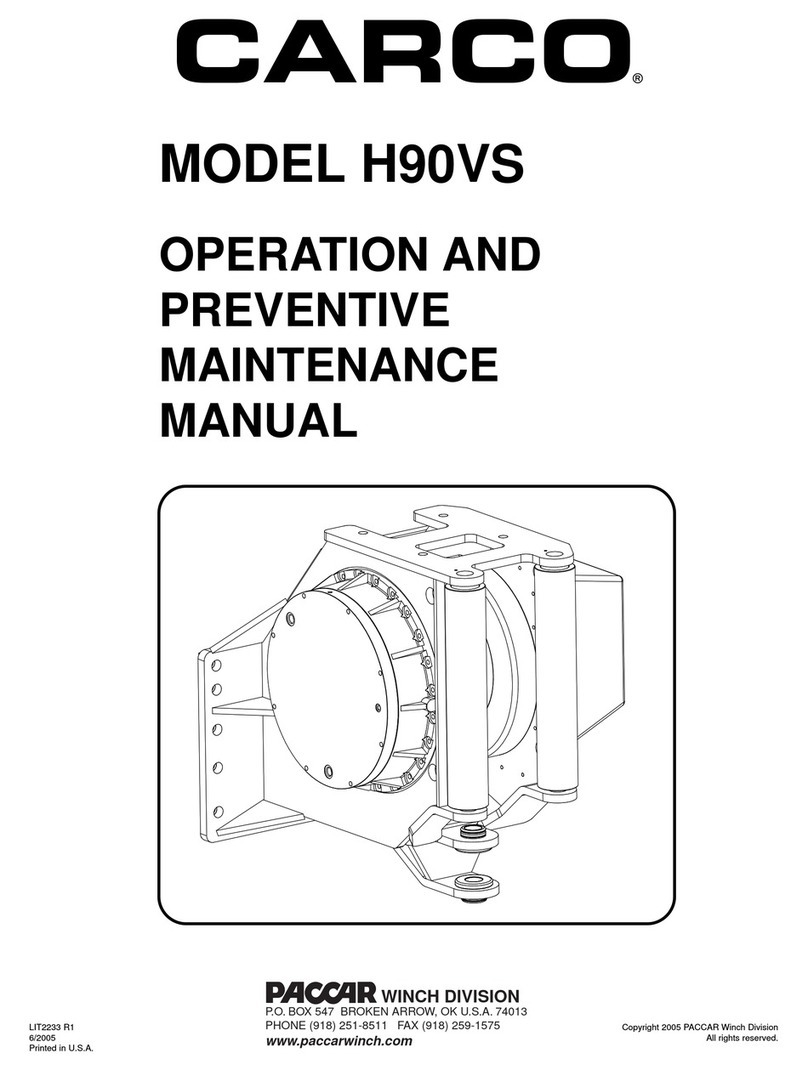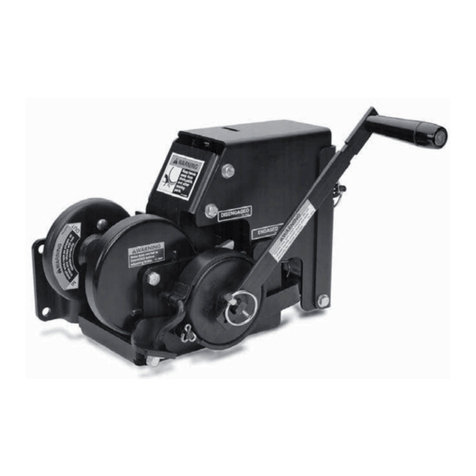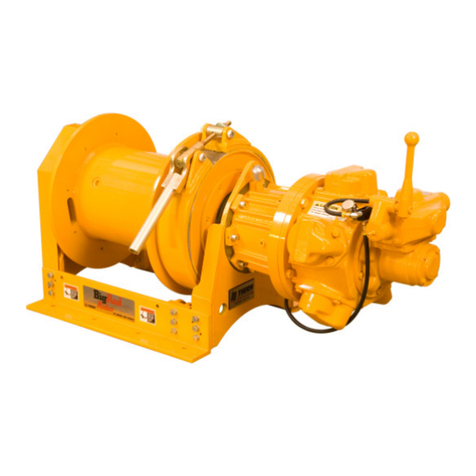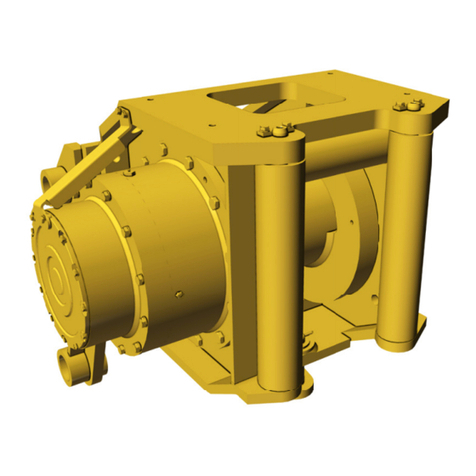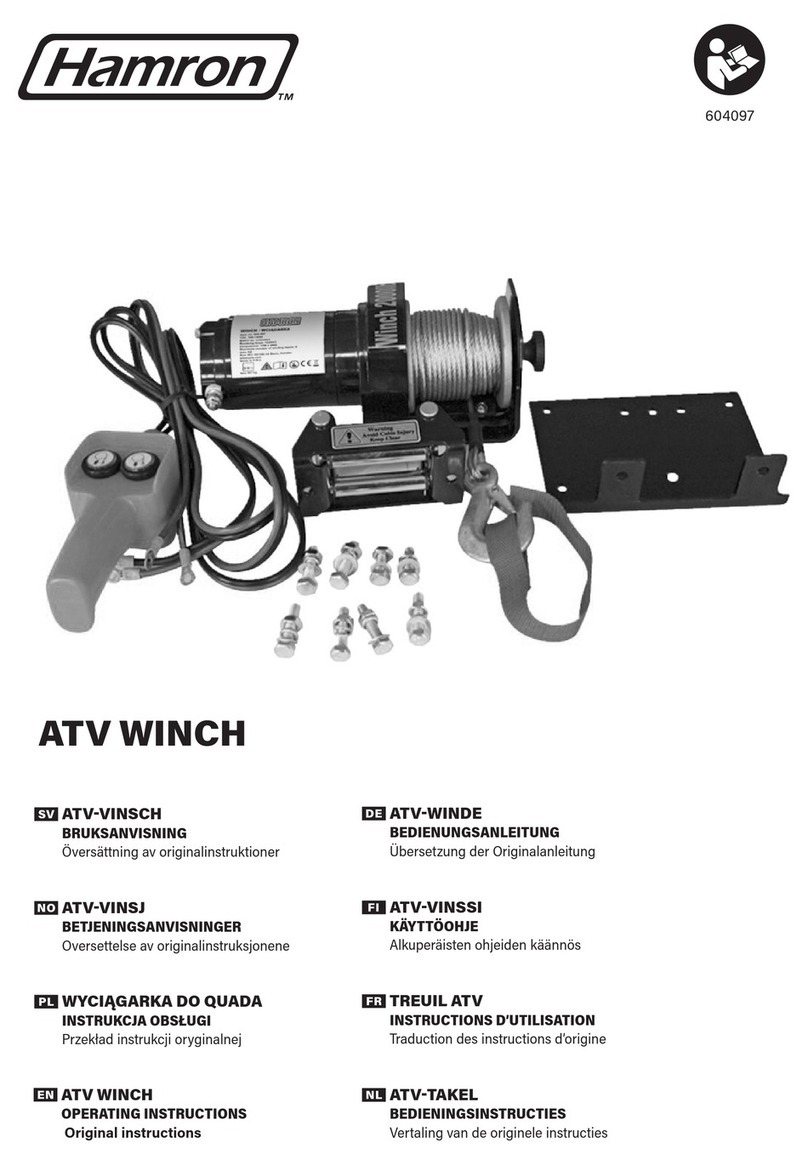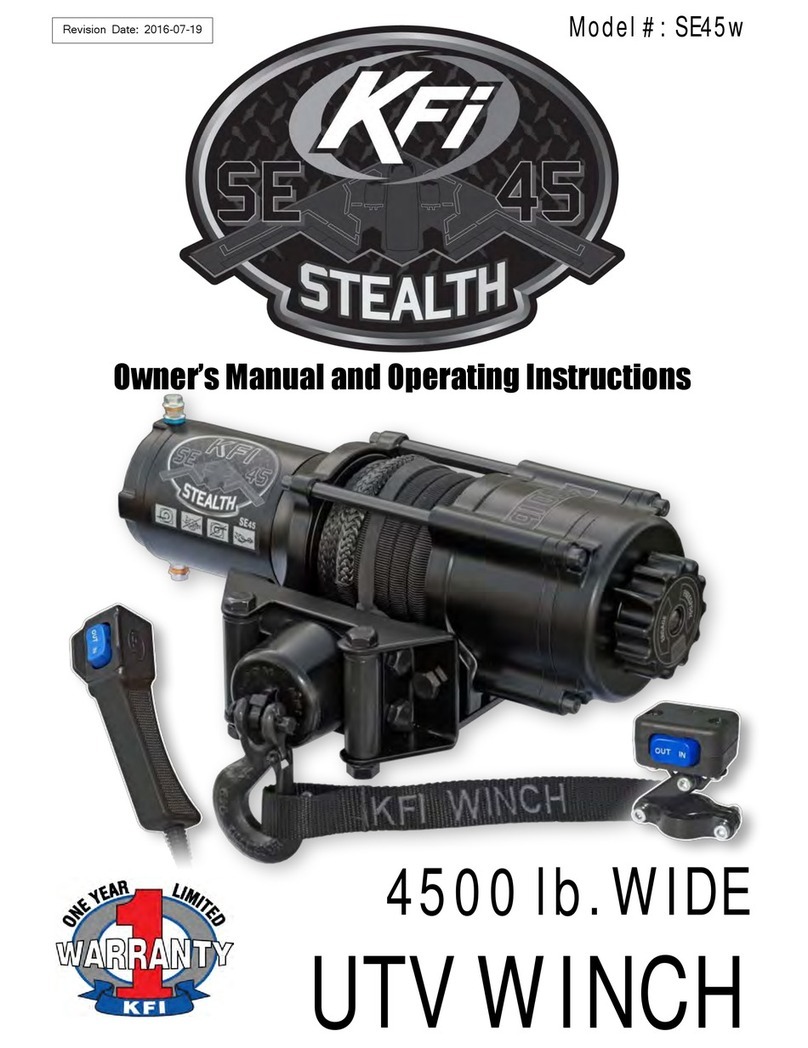
Owner's Manual for Thern Worm Gear Hand Winchespage 14
A6112F-0507
3.3 Inspecting the Equipment
Do not use damaged or malfunctioning equipment. Place an “OUT OF ORDER”
sign on the winch. Do not use the winch until the sign is removed by a qualified
maintenance person who has completely corrected the problem.
Inspect the winch to detect signs of damage or poor operation before they
become hazardous. See Table 1 - Inspection Checklist.
3.3.1 CONSULT APPLICABLE CODES AND REGULATIONS for specific rules
on inspecting the winch and other equipment.
3.3.2 CONSULT MANUFACTURER’S RECOMMENDATIONS for
information on inspecting the wire rope and other equipment.
3.3.3 Instructions for Frequent Inspection
a VISUALLY INSPECT the entire winch and all other equipment involved in
the operation.
• Check all equipment for cracks, dents, bending, rust, wear, corrosion and
other damage.
• Make sure the wire rope is installed correctly and anchored securely to
the drum.
• Make sure the winch and brake are properly lubricated.
• Check the gearbox for signs of leakage and make sure it is filled with the
proper lubricant.
• Make sure the breather plug is clean, open, and installed properly. See
figure 1.
• Make sure the fastener holding the handle in place is tight. See figure 3 or 4.
• Make sure mounting fasteners are tightened securely.
• Make sure the foundation is in good condition, and capable of supporting
the winch and its load under all load conditions.
b TEST WINCH PERFORMANCE by moving a load equal to the load rating.
• Listen for unusual noises, and look for signs of damage as you operate the
winch.
• Make sure the wire rope winds evenly and tightly onto the drum. If it is
loose or uneven, rewind it before continuing.
• Make sure the handle rotates freely in both directions.
• Make sure the load moves smoothly, without hesitation or strain.
• On models equipped with a brake, make sure the disc brake ratchet pawl
clicks firmly as the brake handle is turned clockwise.
• On models equipped with a brake, check the brake. Raise the load, then
lower it and stop it a few feet off the ground. If the load continues to coast
or creep under normal operating conditions, the friction discs may be
worn and in need of replacement. Contact the factory.
Completely correct all problems before continuing. Use the Troubleshooting
Chart to help determine the cause of certain problems. See table 2.
Important!
• Start an inspection program as
soon as you put the winch into
use.
• Appoint a qualified person to be
responsible for regularly in-
specting the equipment.
• Keep written records of inspec-
tion. This allows comparison with
comments from previous inspec-
tions so you can see changes in
condition or performance.
Perform frequent inspections:
• Before each operation.
• Every 3 hours during operation.
• Whenever you notice signs of
damage or poor operation.
Frequent Wire Rope Inspection:
• Use ASME B30.7 as a guideline
for rope inspection, replacement
and maintenance.
• Check the wire rope, end connec-
tions and end fittings for corrosion,
kinking, bending, crushing, bird-
caging or other signs of damage.
• Check the number, distribution and
type of visible broken wires. See
paragraph 3.3.4 c and figure 10.
• Check the wire rope for reduction
of rope diameter from loss of core
support, or wear of outside wires.
See figure 12.
• Take extra care when inspecting
sections of rapid deterioration
such as sections in contact with
saddles, sheaves, repetitive pickup
points, crossover points and end
connections.




















